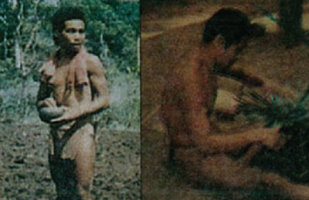
Mangyan Program
Occidental Mindoro
1998
Of the 11 municipalities in the province, nine are populated by Mangyans (Forest Men). The seven tribal groups of Mangyans in the province: lraya, Alangan, Batangan, Buhid, Tao-Buhid, Hamunoo and Ratagnon are distinctly different from one another. Their isolated and instinctive world views are their only commonality. They represent the impoverished, underprivileged and unschooled group of people not only in the province, but also our country.
To date, 5,332 Mangyan births and four marriages were registered. Through the Memorandum of Agreement forged between the provincial government and Office of Southern Cultural Communities (OSCC), the project on Edukasyon at Kalusugan para sa Etnikong Pamayanan sa Kanlurang Mindoro (Education and Health for Indigenous Communities of Occidental Mindoro) was created. At least 90%of Mangyans who have gone through the literacy training classes handled by the para-teachers became functionally literate. A total of 450 students, 382 children ages 4-17 and 68 adults showed remarkable achievement in reading, writing and arithmetic. Health consciousness among the Mangyans were heightened as a result of trainings conducted by para-teachers and medical missions. The OSCC has hired 13 Mangyan para-teachers who were trained at the Occidental Mindoro National College to handle the informal education and health and sanitation training.
The Mangyans’ concern for their environment has become more evident. Through the community elders, tribal members were encouraged to use the sloping agricultural land techniques instead of the slash and burn system. Some of the Mangyans were able to acquire carabao, farm implements and shared hand tractors for farming. Cooperative store, small community training center with demonstration facilities, a community chapel, a tree nursery, a water tank with distribution pipes and a school building were also set-up. Three Mangyan cooperatives tapped the P15 million revolving fund of the Provincial Livelihood Support Program to finance their livelihood projects. The positive impact of the program is obviously seen in the improvement of the socio-economic situation of the Mangyans.
This program is recognized as one of the Ten Outstanding Programs in the 1998 Galing Pook Awards.


